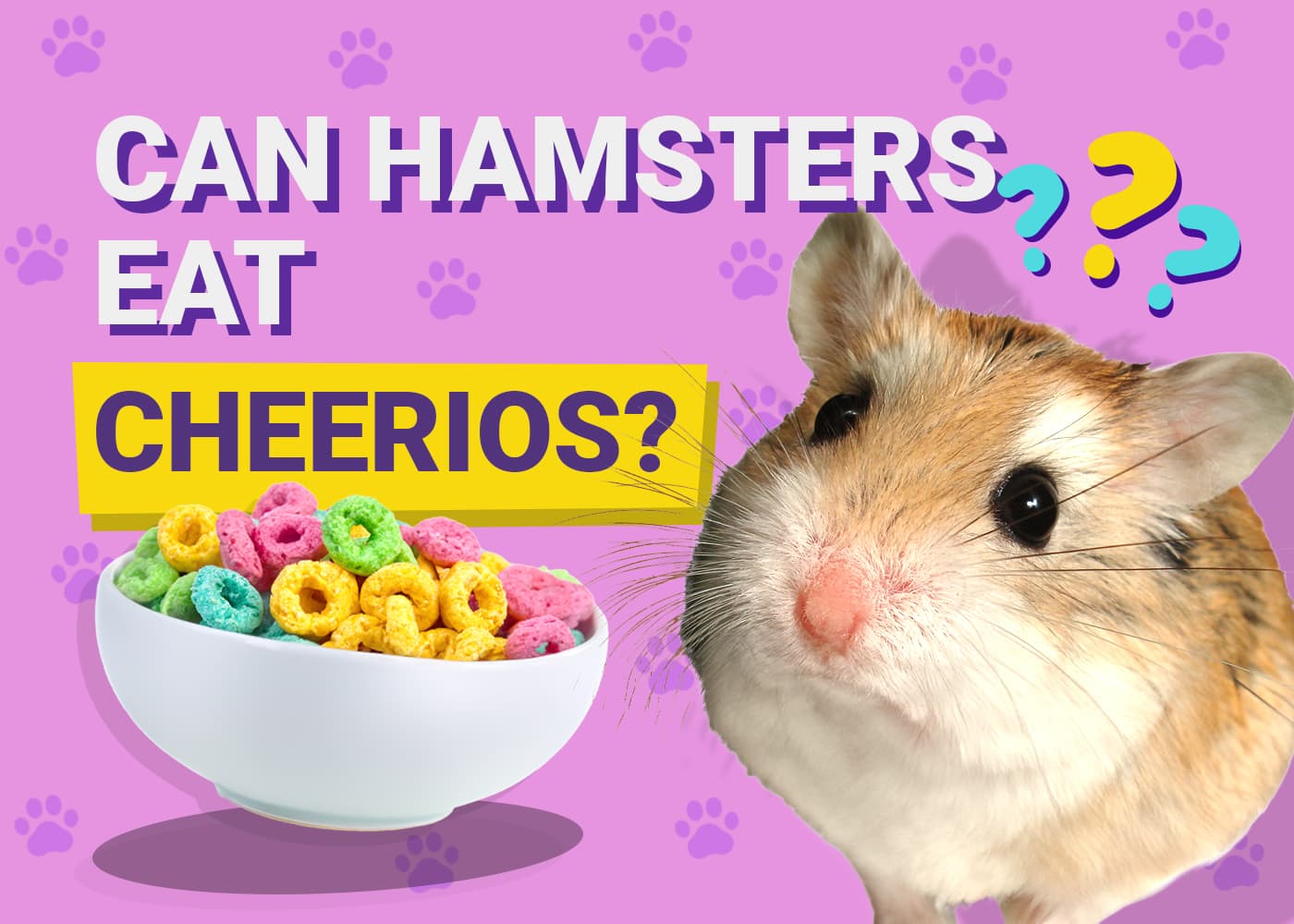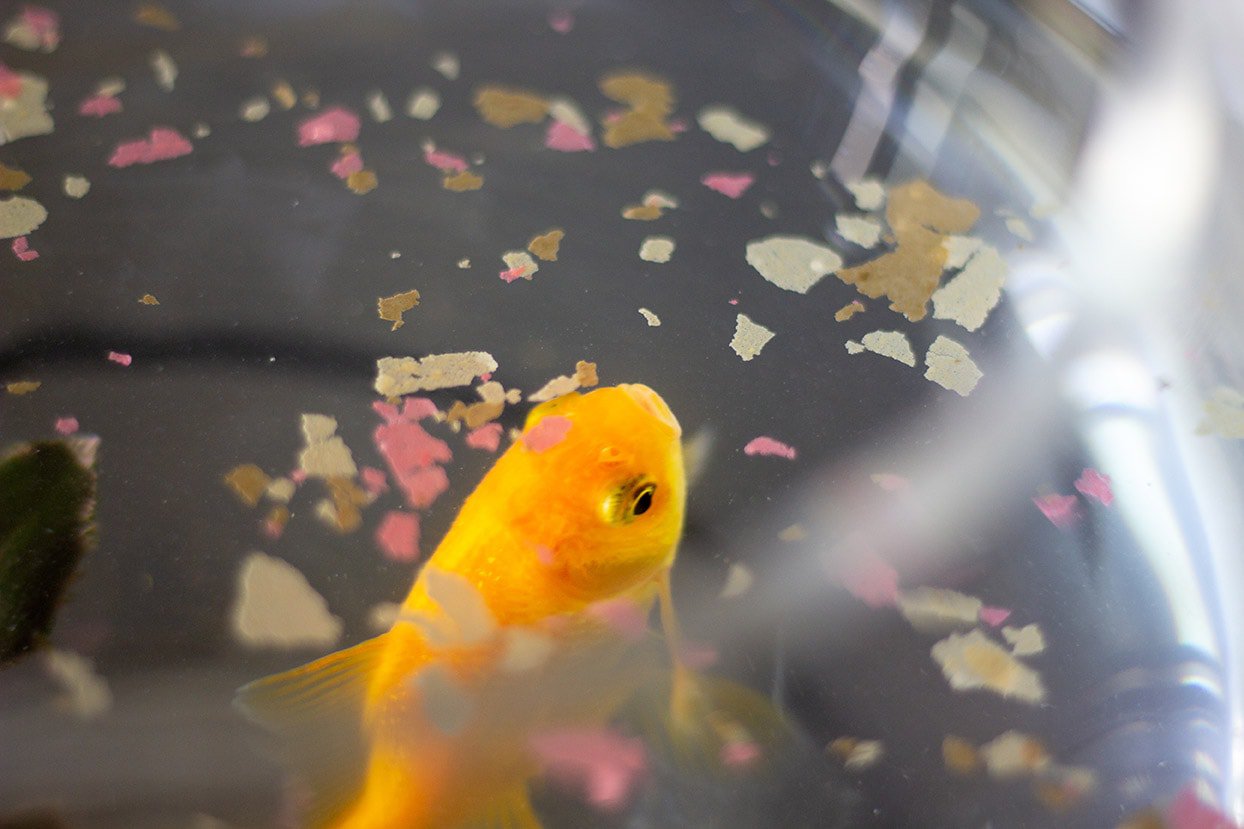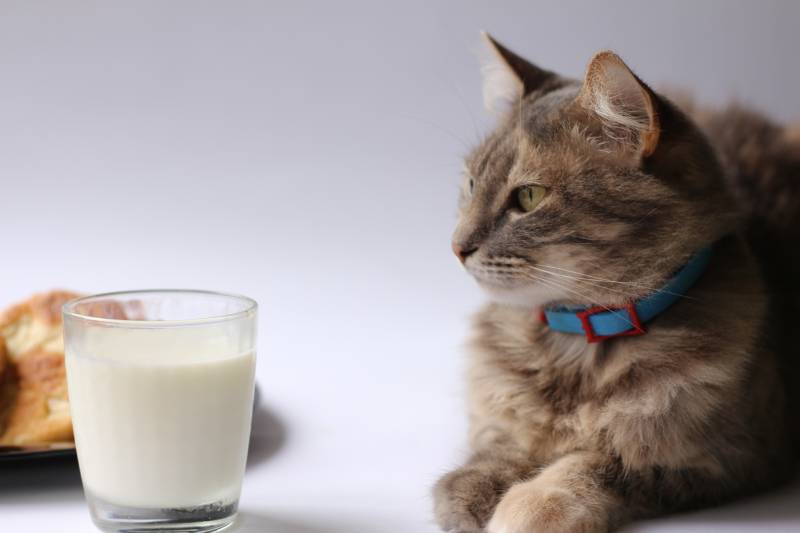VET APPROVED

The information is current and up-to-date in accordance with the latest veterinarian research.
Learn more »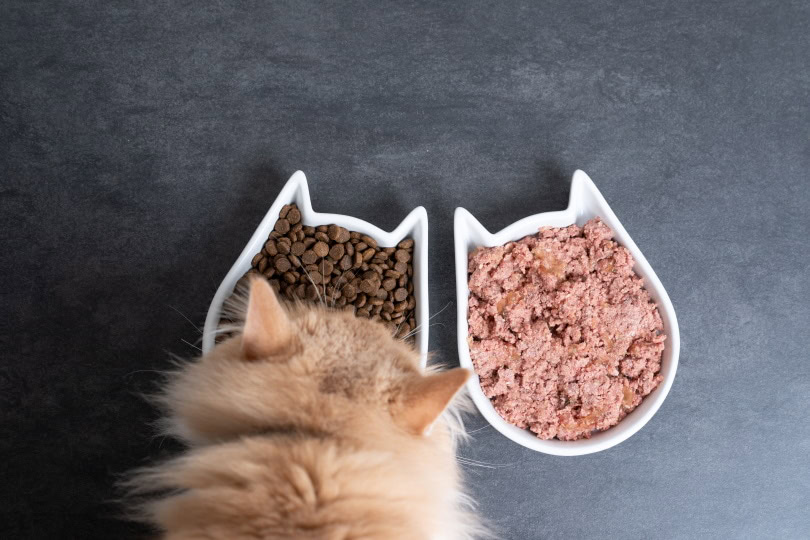
If your cat has been diagnosed with chronic kidney disease, your veterinarian has likely talked to you about switching them to a therapeutic diet to help manage the condition.1
Since the main role of the kidneys is to filter waste products from the blood and maintain fluid/electrolyte balances, harmful waste products build up in the body of a cat with poor kidney function. One of the best ways to manage this problem is with a special diet that aims to reduce the accumulation of these waste products. It should include foods that are low in protein, phosphorus, and sodium and high in vitamins, fiber, and antioxidants.
This table shows how the values of these nutrients for cats with kidney disease compare with those for normal, healthy cats, as recommended by the AAFCO:
| Normal Diet | Renal Diet | |
| Protein | >26% | 28–35% |
| Phosphorus | 0.5% | 0.3–0.6% |
| Sodium | 0.2% | <0.4% |
| Omega-3 Fatty Acids | Not specified | 0.4–2.5% |
Note: These are based on “dry matter” (DM) figures. To translate the percentages for wet foods, check out the guide at the end of the reviews list.
While kidney diets should be relatively low in protein, they should not fall below the recommended range, as this can lead to the breakdown of muscle mass.
Interestingly, the values recommended for cats with renal disease are not dissimilar to the minimum standards recommended by the AAFCO. That said, there is significant variation between products, so it is vital to pay close attention to the labels and speak to your vet for advice.
There are low-phosphorus commercial cat foods specially formulated for cats with kidney issues. Many kidney care diets require a veterinarian’s prescription, but some don’t.
These reviews will help you find the best cat food for kidney health for your cat. We talk about both prescription and non-prescription options, so be sure to always follow your vet’s exact instructions when choosing cat food.
Disclaimer: The foods reviewed here were chosen because they have certain characteristics that might help with some of the causes or consequences of this medical condition. However, they are not a medical treatment or a substitute for medical treatment. Keep in mind that each medical case is different, and what works for some pets may not work for others. Your veterinarian is the right person to advise you on the best diet for your pet’s individual case.
Click to Skip Ahead

A Glance at Our Winners in 2025
| Rating | Image | Product | Details | |
|---|---|---|---|---|
Best Overall
 |
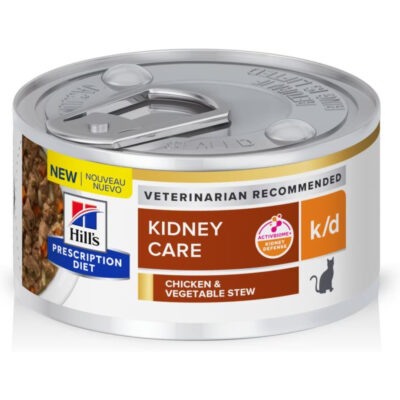 |
Hill's Prescription Kidney Wet Cat Food |
|
CHECK PRICE |
Best Value
 |
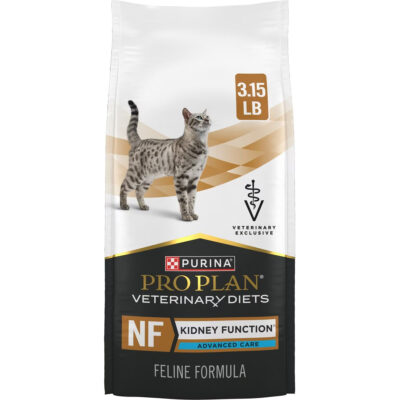 |
Purina Pro Plan Vet Diet Dry Cat Food |
|
CHECK PRICE |
Premium Choice
 |
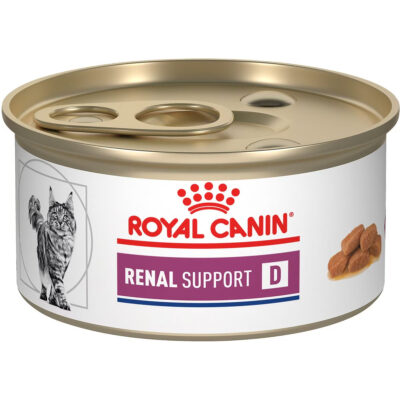
|
Royal Canin Renal Support Cat Food |
|
CHECK PRICE |
|
|
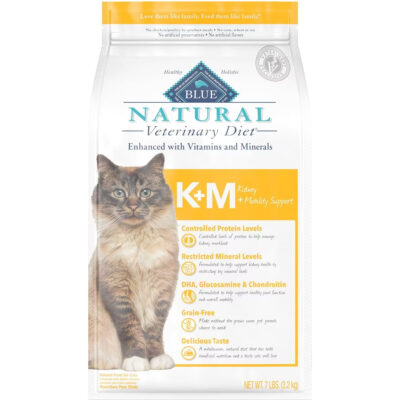 |
Blue Buffalo Vet KM Cat Food |
|
CHECK PRICE |
|
|
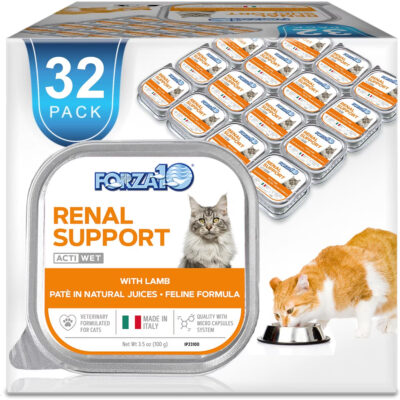 |
Forza10 Renal Support Cat Food |
|
CHECK PRICE |
The 10 Best Cat Foods for Kidney Disease (Low Phosphorus)
1. Hill’s Prescription Diet k/d Kidney Care Canned Food – Best Overall
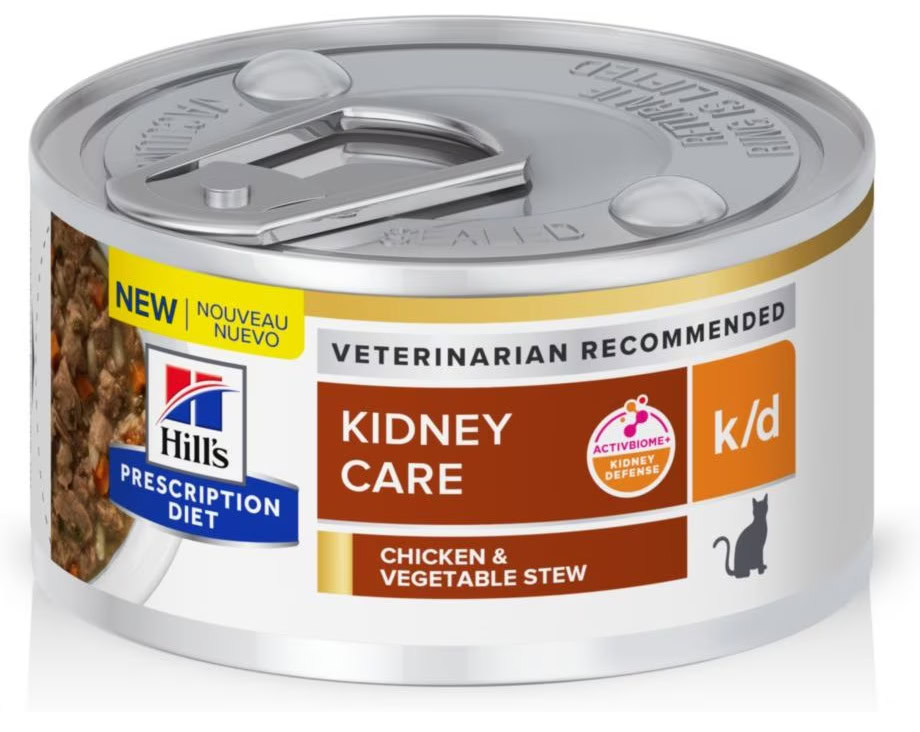
| Phosphorus: | 0.49% |
| Protein: | 30% |
| Sodium: | 0.23% |
| Calories: | 70 kcal/2.9 oz can |
Hill’s Prescription Diet k/d Kidney Care Chicken & Vegetable Stew Canned Cat Food is our pick for best overall cat food for kidney disease. This popular food requires a veterinary prescription but is widely available.
It is a palatable wet food with chicken as the primary animal protein. As a kidney care diet, it has the right amounts of phosphorus, protein, and sodium to support your cat’s health.
- Contains gravy to stimulate the appetite
- Supports urinary tract health by reducing the risk of crystal formation
- Requires a veterinary prescription
2. Purina Pro Plan Vet Diets NF Kidney Care Dry Cat Food – Best Value
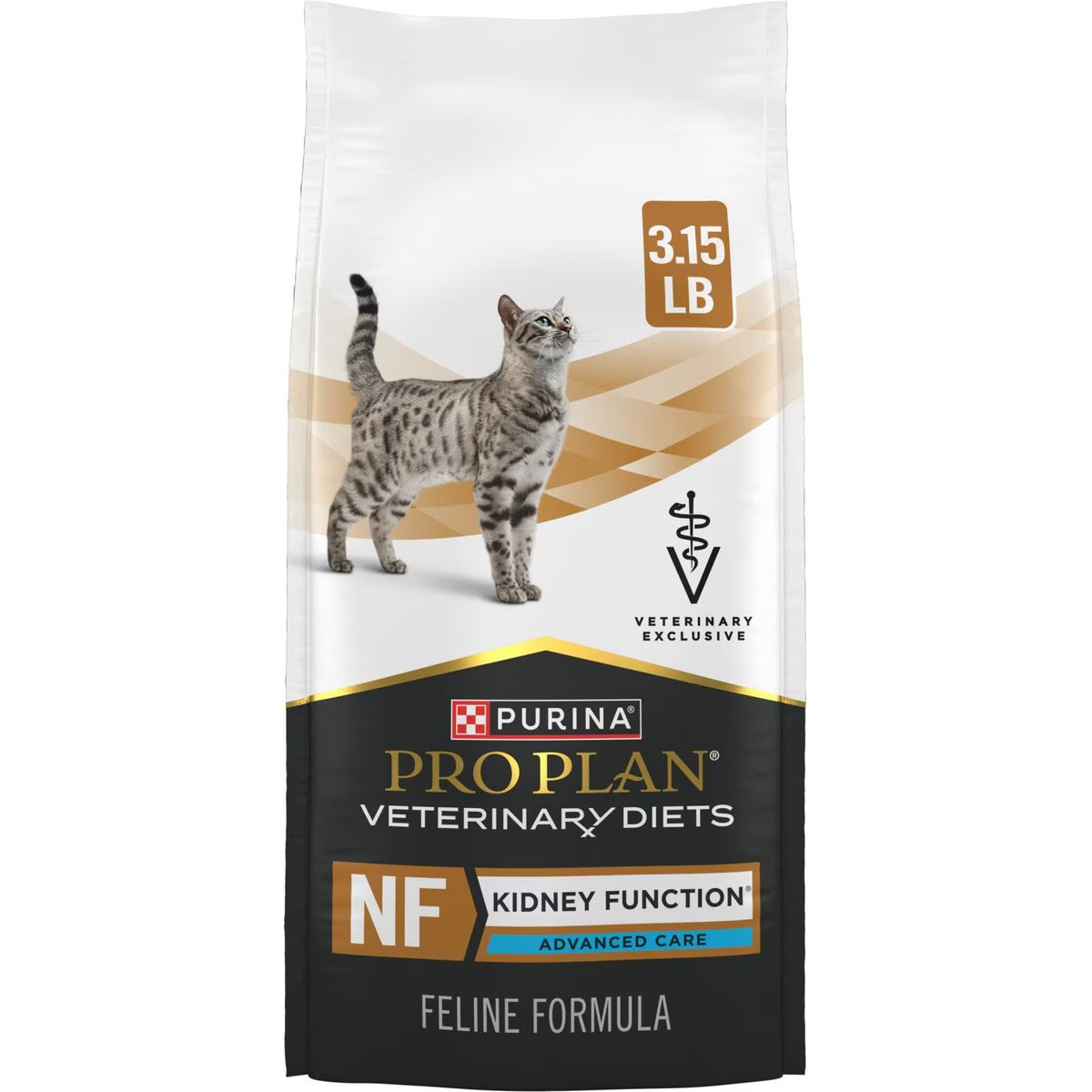
| Phosphorus: | 0.44% |
| Protein: | 26.5% |
| Sodium: | n/a |
| Calories: | 536 kcal/cup |
Purina Pro Plan Veterinary Diets NF Kidney Function Advanced Care Formula Dry Cat Food is our pick for the best cat food for kidney disease for the money.
Although it is a veterinary diet that requires a prescription, it is a better value than some other veterinary diets. This formula is low in phosphorus and protein for kidney health and contains omega-3 fatty acids and antioxidants to help support your cat’s overall health.
- Contains proper amounts of protein and phosphorus
- Primary animal protein is tuna
- Requires a veterinary prescription
3. Royal Canin Vet Diet Renal Support Cat Food – Premium Choice
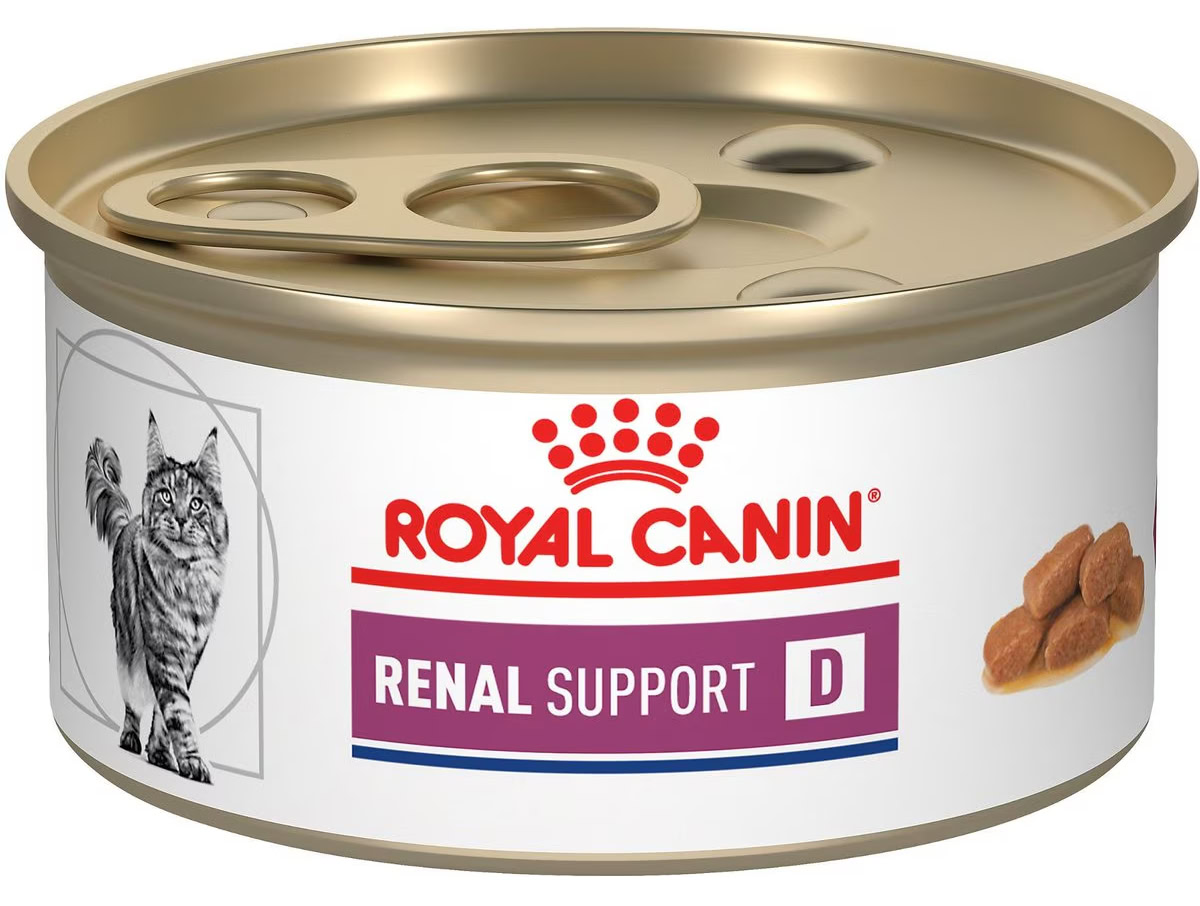
| Phosphorus: | 0.5%* |
| Protein: | 40%* |
| Sodium: | n/a |
| Calories: | 98 kcal/can |
*Figures extrapolated into DM values
Royal Canin is a quality veterinary diet that is often the preferred choice of veterinarians. This kidney health prescription diet gets high marks from the owners of picky cats. The D stands for “delectable”, and the morsels in gravy formula help to stimulate your cat’s appetite.
- An energy-dense formula for cats that eat smaller meals
- Contains antioxidants and fatty acids from fish oil
- The main animal protein is chicken
- Requires a veterinary prescription
4. Blue Buffalo Vet Diet K+M Dry Cat Food
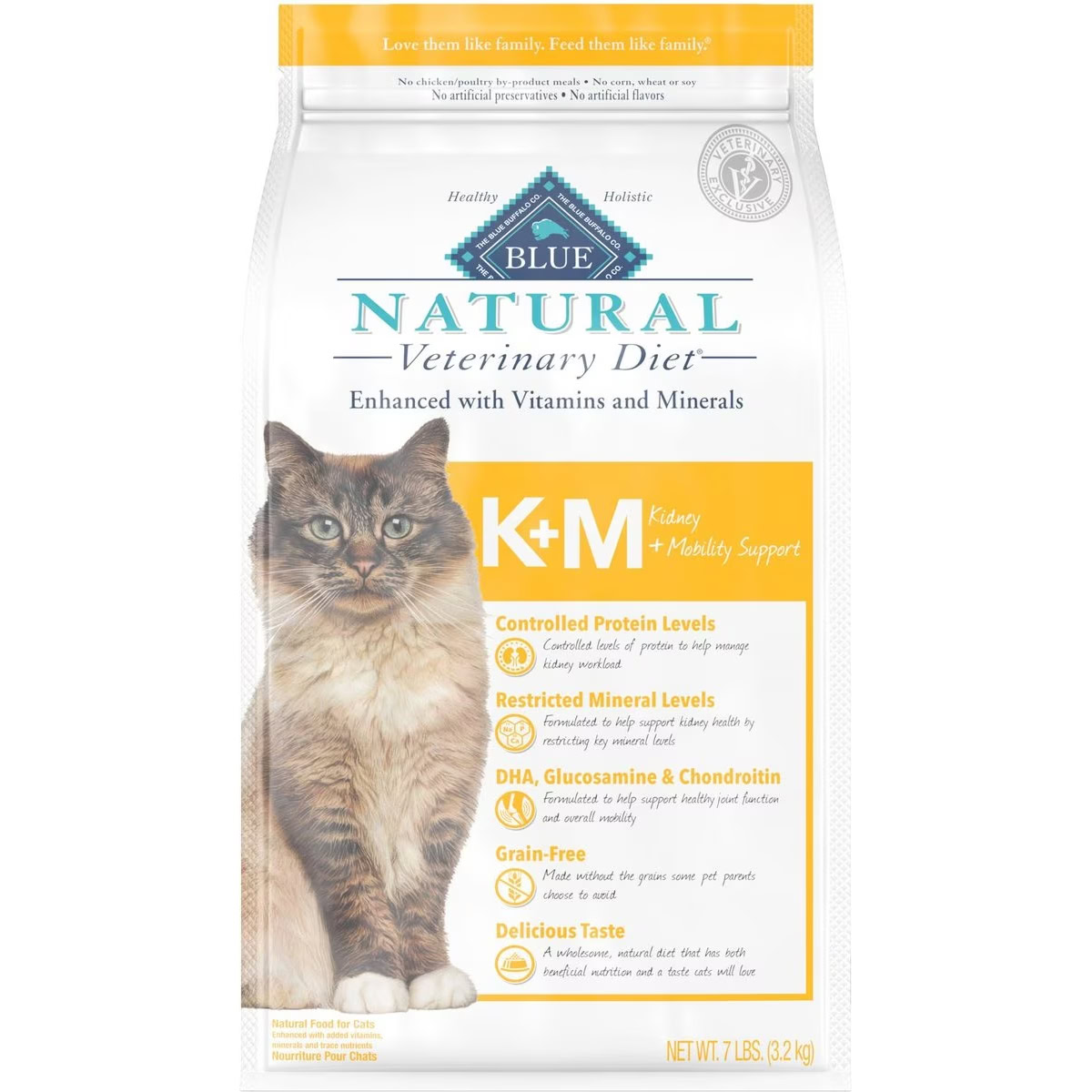
| Phosphorus: | 0.7% |
| Protein: | 26% |
| Sodium: | 0.35% |
| Calories: | 425 kcal/cup |
This is a prescription kidney diet that has controlled levels of protein, phosphorus, and sodium for kidney health. It is grain-free, and the primary animal protein is chicken. It also has the added benefit of joint health ingredients like glucosamine and chondroitin, which are good for older cats with both mobility and kidney issues.
- Contains real chicken, not by-products
- Supports kidney health and joint health
- Requires a veterinary prescription
- Cats need to drink more water with dry food diets
- Phosphorus levels slightly above recommended range
5. Forza10 Renal ActiWet Renal Support Canned Cat Food
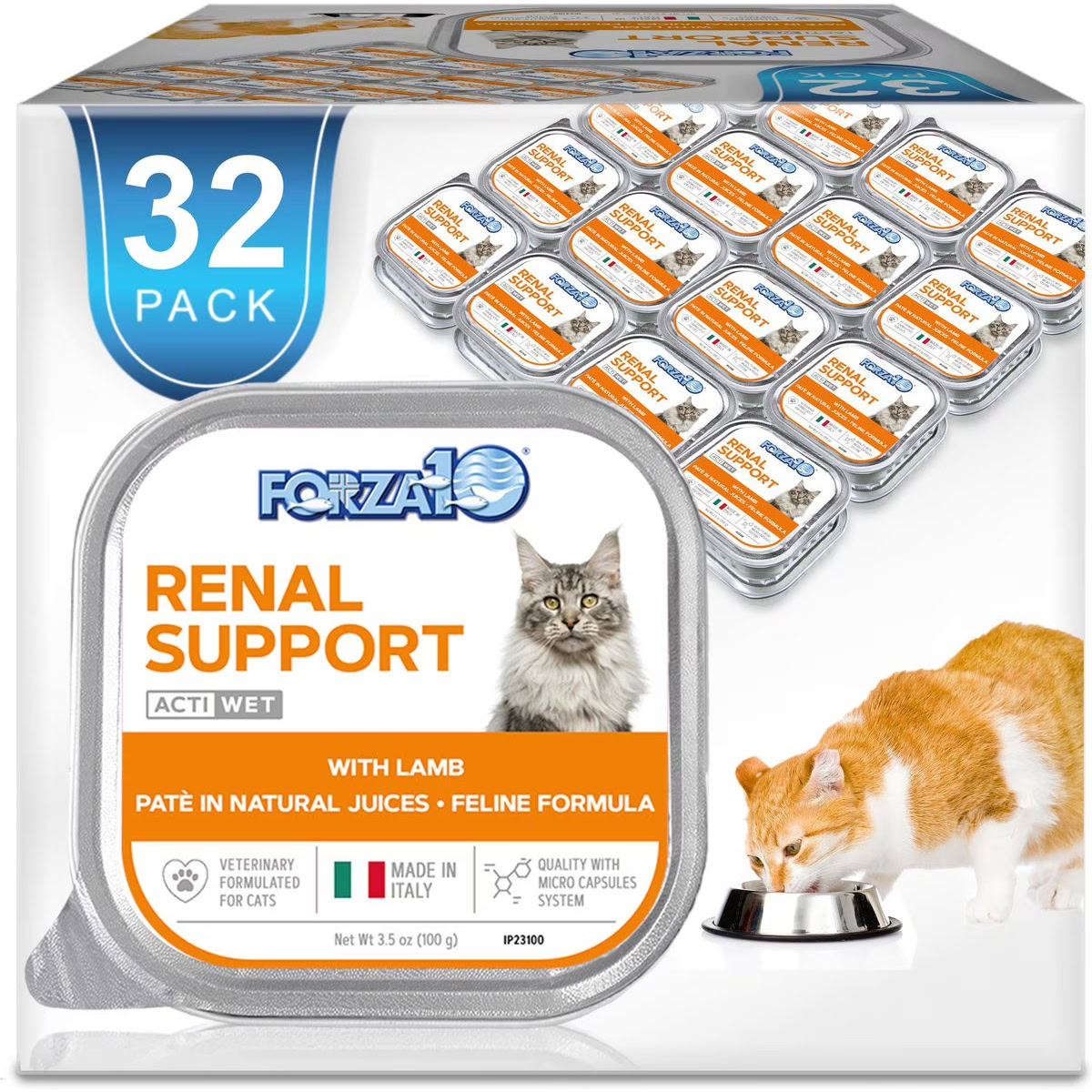
| Phosphorus: | 0.52%* |
| Protein: | 24%* |
| Sodium: | 0.24%* |
| Calories: | 80 kcal/tray |
*Figures extrapolated into DM values
This is a kidney care diet that does not require a veterinarian’s prescription (check with your vet before buying, though). It’s made with lamb and contains no corn, wheat, or soy. In addition to having low amounts of phosphorus, protein, and sodium, it has natural plant ingredients like cranberry for added renal support.
- Does not require a veterinary prescription
- Contains no meat by-products or GMOs
- Your vet may prefer a prescription veterinary diet
6. Hill’s Prescription Diet k/d Kidney Care Dry Cat Food
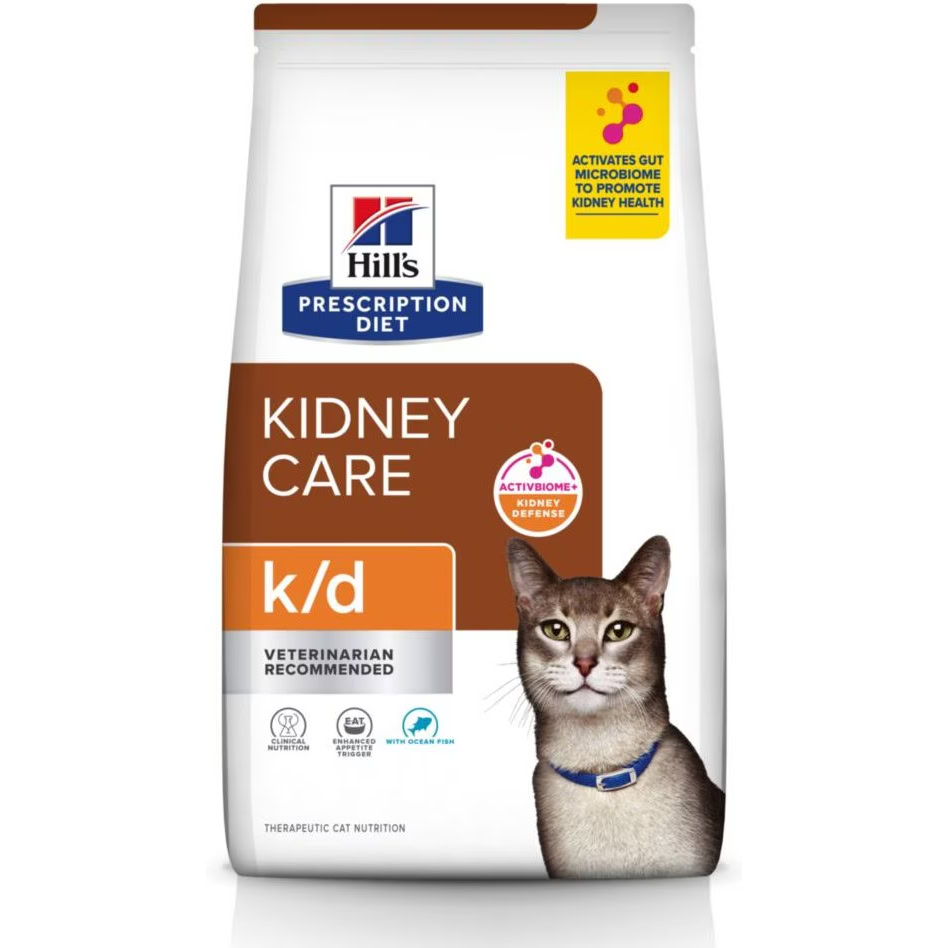
| Phosphorus: | 0.52% |
| Protein: | 29.8% |
| Sodium: | 0.26% |
| Calories: | 444 kcal/cup |
This Hill’s kidney care dry cat food gets high marks from owners of finicky feline eaters who prefer fish-flavored cat food. Formulated with controlled phosphorus and low sodium for kidney health, it also contains l-carnitine and omega-3 fatty acids to support your cat’s overall health.
- Enhanced Appetite Trigger (E.A.T.) technology to stimulate appetite
- High levels of essential amino acids
- Requires a veterinary prescription
- Cats need to drink more water with dry food diets
7. Royal Canin Vet Diet Renal Support E Canned Cat Food
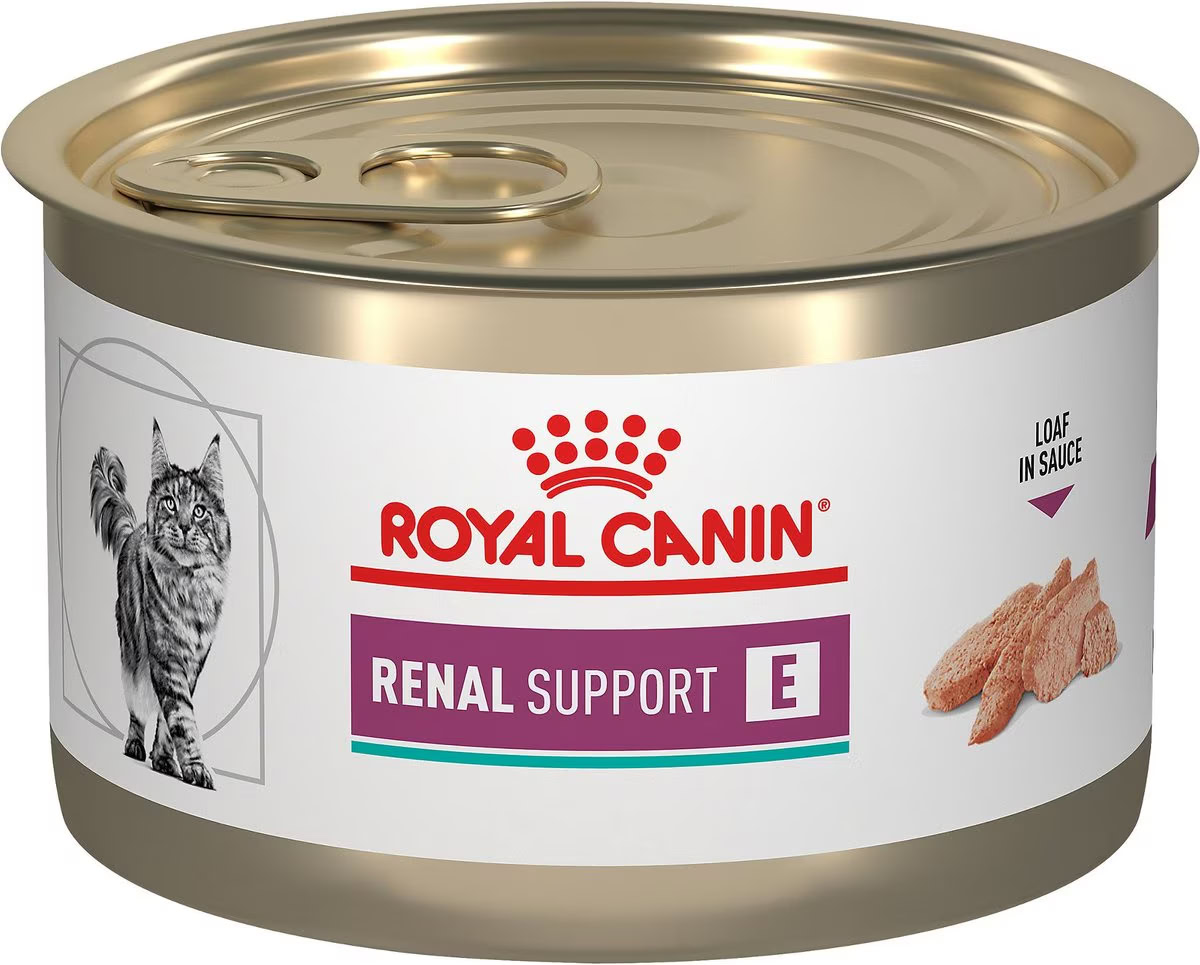
| Phosphorus: | 0.56%* |
| Protein: | 36%* |
| Sodium: | n/a |
| Calories: | 151 kcal/can |
*Figures extrapolated into DM values
This is another Royal Canin veterinary kidney diet option. With this variety, the E stands for “enticing”, and it is designed to stimulate your cat’s appetite. It comes in a loaf-in-sauce form and is energy-dense, so it provides more nutritional support for cats that eat small portions.
- Formulated with proper phosphorus and protein levels
- Contains antioxidants and fatty acids from fish oil
- Requires a veterinary prescription
8. Forza10 Nutraceutic Kidney Renal Support Dry Cat Food
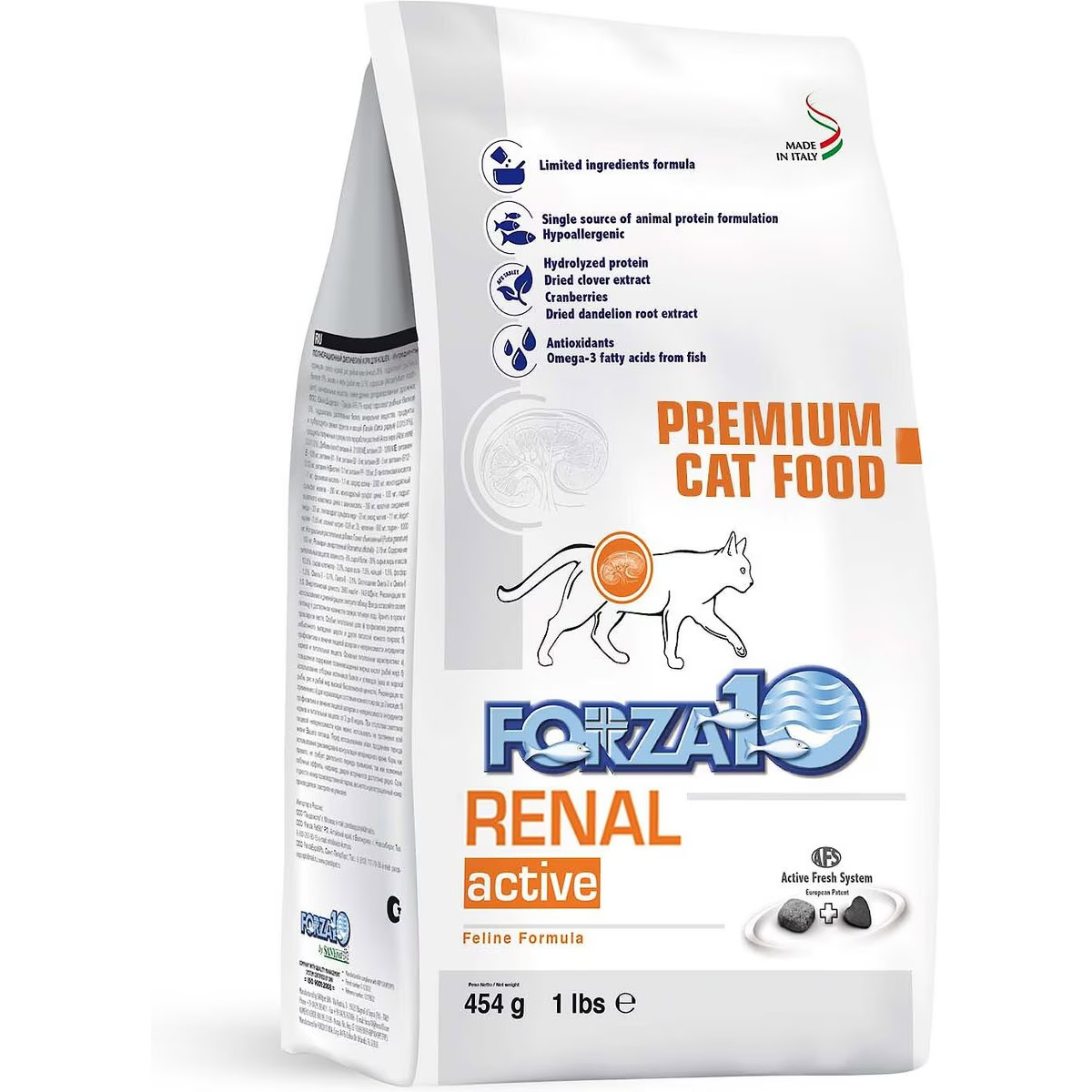
| Phosphorus: | 0.8% |
| Protein: | 26% |
| Sodium: | 0.24% |
| Calories: | 461 kcal/cup |
You don’t need a veterinarian’s prescription to buy this Forza10 kidney support food, though it’s a good idea to check with your vet before buying. Like prescription renal diets, it has low protein and sodium, , but at 0.8%, the phosphorus level is slightly higher than recommended. It also contains therapeutic plant extracts and omega-3 fatty acids from anchovy for your cat’s overall health.
- Does not require a veterinary prescription
- Contains natural antioxidant and anti-inflammatory ingredients
- Your vet may prefer a prescription veterinary diet
- Cats need to drink more water with dry food diets
- High phosphorus levels
9. Hill’s Prescription Diet k/d Early Support Dry Cat Food
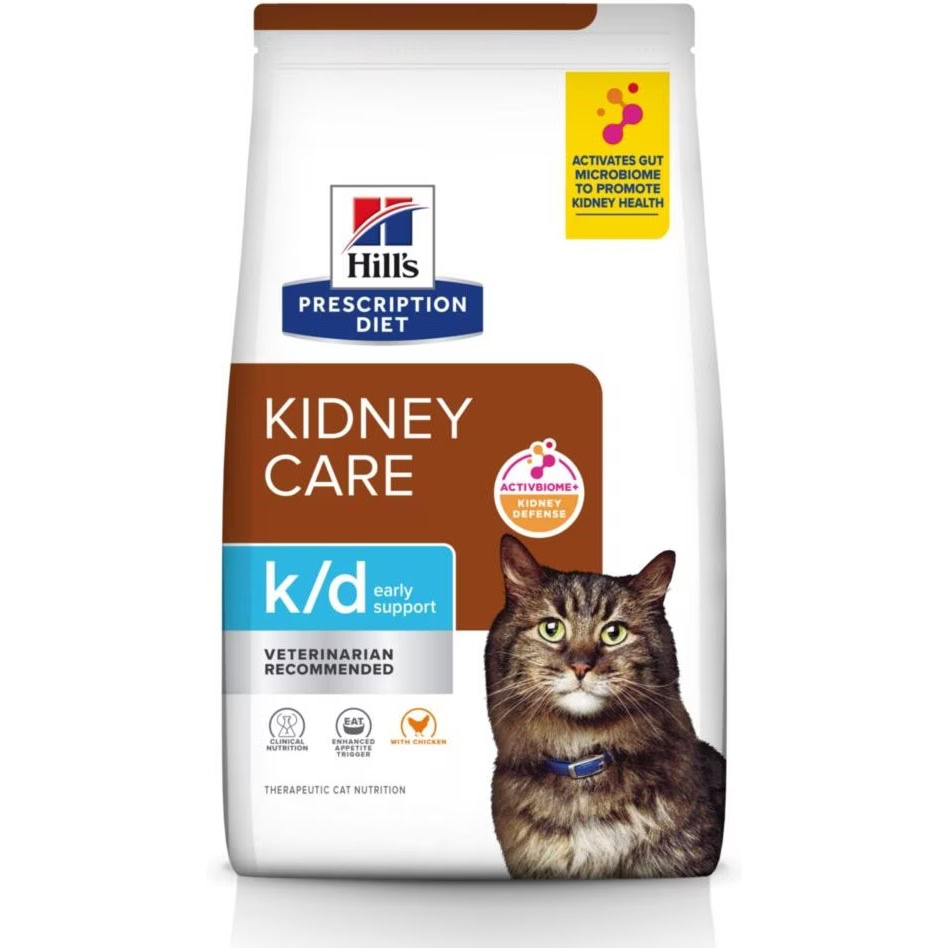
| Phosphorus: | 0.56% |
| Protein: | 34% |
| Sodium: | 0.25% |
| Calories: | 536 kcal/cup |
This version of Hill’s Prescription Diet k/d is formulated for cats with early kidney disease. It provides early protection of kidney function and is also designed to stimulate your cat’s appetite. It is low in phosphorus and sodium and contains omega-3 fatty acids, essential amino acids, and l-carnitine. The high protein levels aim to support your cat’s muscle mass, which can deteriorate as their condition worsens.
- Designed specifically for early kidney disease
- Enhanced Appetite Trigger (E.A.T.) technology to stimulate appetite
- Requires a veterinary prescription
- Not designed for advanced kidney disease
10. Purina Pro Plan Vet Diets NF Kidney Care Wet Cat Food
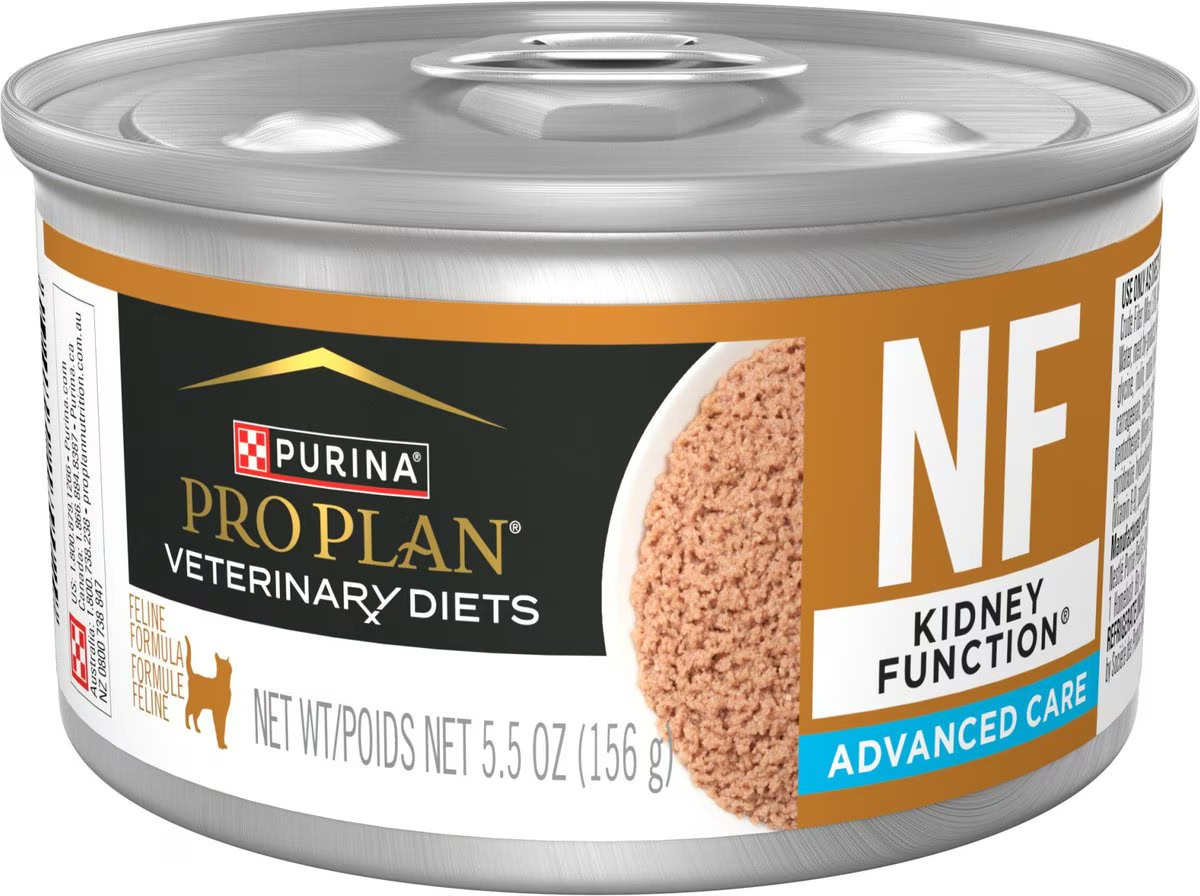
| Phosphorus: | 0.5%* |
| Protein: | 25%* |
| Sodium: | n/a |
| Calories: | 164 kcal/can |
*Figures extrapolated into DM values
Purina Pro Plan Vet Diets NF Kidney Care Wet Cat Food is a canned veterinary diet prescription-only cat food for cats with advanced kidney disease and kidney failure. Low amounts of sodium, phosphorus, and protein reduce the workload of damaged kidneys and help your cat feel more comfortable.
- Specifically designed for advanced kidney disease
- Contains added B-complex vitamins
- Requires a veterinary prescription
- Not designed for cats with early kidney disease

Buyer’s Guide: Choosing the Best Cat Foods for Kidney Disease

What are the key factors to keep in mind when deciding on the best cat food for renal failure? The most important thing is to follow your veterinarian’s recommendations.
- Most cat food for kidney disease requires a prescription. Cats with impaired kidney function have unique nutritional needs that are very different from those with normal kidneys.
- Therapeutic kidney diets contain controlled amounts of phosphorus, protein, and sodium, but amounts (and other ingredients) vary from brand to brand. If your vet prescribes a particular food for your cat, be sure to follow the treatment plan.
- Cats with kidney disease often have small appetites, so finding a food that your pet will eat is important. Talk to your vet about alternative foods to try if your cat doesn’t like the first one.
- You can choose dry, wet, or a combination of both, but be sure to provide plenty of water if your pet prefers dry food. With some patience, you and your vet can find the right kidney diet for your cat.
- If you have multiple cats and only one has kidney disease, make sure to feed your cats separately so they don’t eat each other’s food.
- Be sure not to confuse kidney/renal care cat food with urinary care cat food. Veterinary diets for urinary health are designed to prevent the formation of crystals in your cat’s urinary tract. It is a different dietary formulation than food for kidney disease.
- While many raw or fresh food diets are great for cats, they are not ideal for those with renal disease. They are usually too high in protein, often around 40–50%.
Calculating Dry Matter (DM) Values
Most ingredient labels give nutrient values in an “as fed” format, so the levels of protein, fat, fiber, etc. in a wet food will appear significantly lower than in a dry food. To get an idea of whether a wet food meets DM recommendations, you’ll need to correct for the moisture content of the food.
This guide provides a quick and easy way to estimate DM equivalents, but you should be aware that these are not accurate values.
| Moisture | Content Multiply Nutrient Level By |
| 70% | 3.33 |
| 75% | 4 |
| 80% | 5 |
| 85% | 6.66 |
If a canned food contains close to 75% moisture, 8% protein, and 0.13% phosphorus, we can multiply those values by 4 to get:
- 32% protein
- 0.52% phosphorus
Know that some wet foods do give these nutrients as DM values, so make sure you read the label carefully.
Our Best Cat Foods for Kidney Disease Selection Process
The cat food we reviewed in this article were chosen by PangoVet’s writers and editors, in collaboration with our experienced veterinary team, based on personal experience with the product, knowledge and expertise about the pet’s care needs, brand reputation, and reviews across multiple retail outlets from other customers that have purchased and used the product. The combination of these factors allows us to gather a wide range of information to help you choose only the best cat food and ensure you have the most accurate information about these products to promote proper care, health, and well-being of your beloved pets.
Why Trust PangoVet?
PangoVet’s licensed and experienced veterinarians have a knowledge base that extends to all kinds of pets—furry, scaly, and feathered—and want only the best for pets of all shapes and sizes. We also have experienced writers and editors who are pet owners with a variety of different pets, and we love our pets as much as you do. We recognize pets as part of our family. We make sure to only choose products from reputable brands highly rated by customers as well as products that we have personal experience with, to ensure that every cat food featured in this review is high-quality and safe for your pets.
If you have additional questions about choosing the right food for your cat, a call with a vet can help.

Final Thoughts
Let’s recap our reviews and top picks!
Hill’s Prescription Diet and Royal Canin Veterinary Diet are the top choices of veterinarians. Each manufacturer has several varieties of renal support cat food lines. Your vet may prefer one company over the other, but both are very good.
For the best overall cat food for kidney disease, we like Hill’s Prescription Diet k/d Kidney Care Chicken & Vegetable Stew Canned Cat Food, and Royal Canin Veterinary Diet Renal Support D Thin Slices in Gravy Canned Cat Food. is a good premium choice. Both are well-formulated for kidney disease and palatable to most cats.
- You may also be interested in: Best Cat Foods for Pancreatitis – Reviews & Top Picks
Featured Image Credit: Nils Jacobi, Shutterstock






